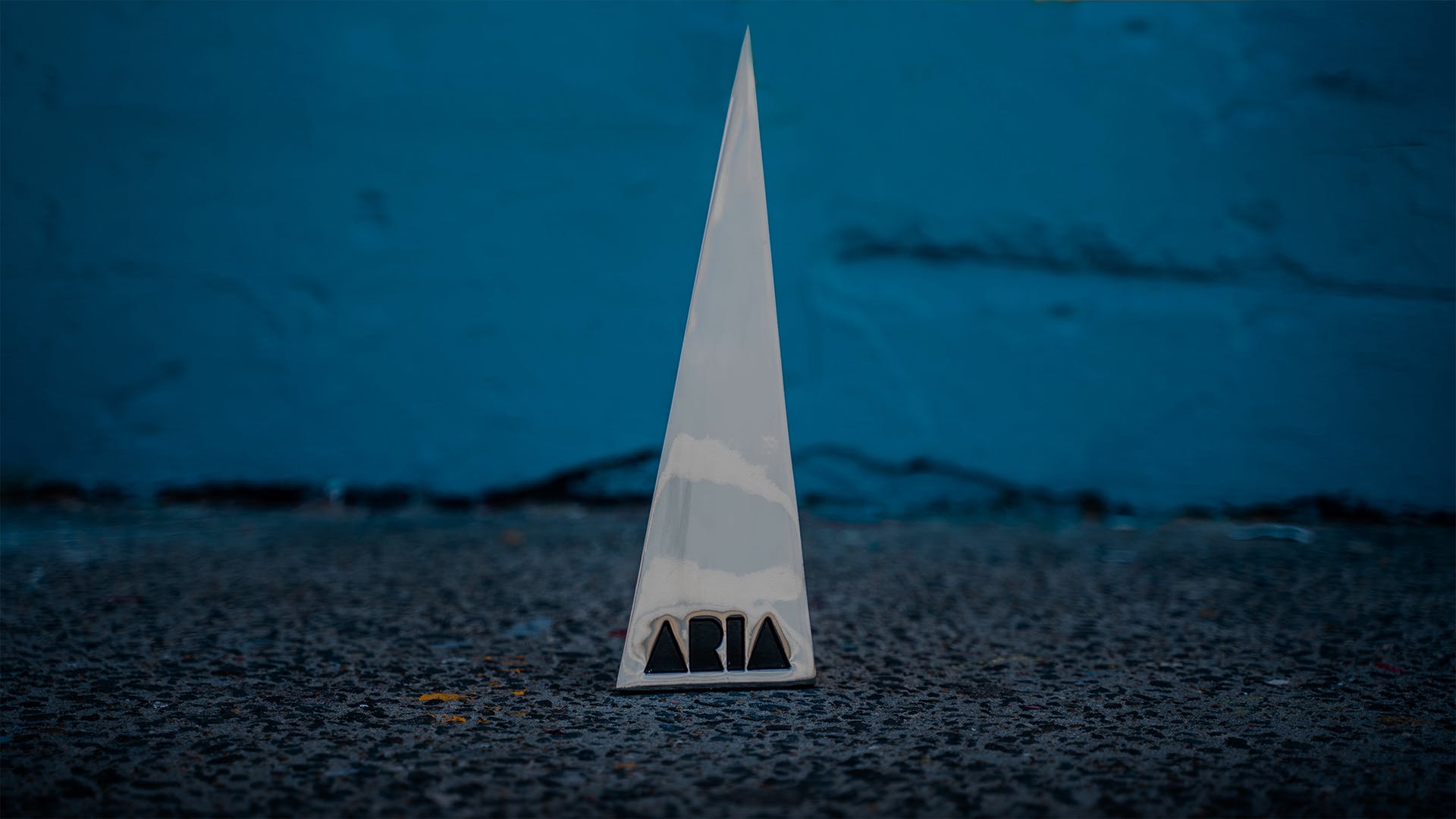What the ARIA Award winners reveal about the industry’s biases

Love ‘em or hate ‘em, the ARIA Awards – Australian music’s night of nights – are meant to provide a snapshot of the country’s best music over the past 12 months. How representative are they of the nation’s diverse music scene, though?
Inspired by this piece from The Sydney Morning Herald, we collated data from a number of sources including Jaxsta and MusicBrainz to highlight a number of trends among the 34 winners of ARIA’s coveted Album of the Year award, including their genre, team size and location.
If you’re a musician with your eye on the sharp and pointy prize, here are five suggestions to get ahead of the pack – statistically speaking, of course.
Be a man
This one will probably come as a surprise to very few. Of the 34 Album of the Year awards handed out so far, only eight (or less than a quarter) were won by female-fronted acts: Missy Higgins, Kasey Chambers, Baby Animals, Tina Arena, Amy Shark, Killing Heidi, Sia and Angus & Julia Stone.
Of the male-fronted acts, Tame Impala’s Kevin Parker has won three, while Bernard Fanning has won three with Powderfinger and one under his solo work.
This year, ARIA has made the decision to merge its Best Male Artist and Best Female Artist awards into a singular Best Artist category, with the rationale to include non-binary artists and recognise women as men’s equals in the industry. However, with such an uneven gender balance among the Album of the Year winners over decades, it raises the question of how the new all-gender category will fare in early years. This year’s nominees are a promising first look, though.
At the time the announcement was made, TMN did raise concerns that the music industry’s issues with older women, as well as wider structural and ingrained issues, could result in women and those who aren’t cis men being overlooked in the integrated category.
How will ARIA combat unconscious bias if the judging panel doesn’t even know they’re executing it?
ARIA CEO, Annabelle Herd, conceded these things will take time, but said each step towards a better outcome is important.
“Look, I understand [and] that concern has been raised, although not [by] many. Overwhelmingly, this announcement has been met with a really, really positive response. We’re not going to get the gender balance right straight away, and there are issues around recognition of female and non-binary artists that are going to take some work to change, but having a separate category for women is not the way to get equality,” she told TMN in response to the concerns.
Be backed by a major label
There are a number of paths musicians can take to getting their music heard, but most involve a label and a distributor. While major labels have the resources to distribute their own releases, smaller independent labels will often strike up a partnership with either a major label or another independent company to get their music out there. Some bands will forgo a label entirely (or establish their own) and directly hit up a distributor.
Releases from major labels, past or present, take out the majority of Album of the Year wins. This makes plenty of sense considering the people-power and marketing budgets each of these companies would have to promote their records. It’s also worth wondering how many label staff make up the secret 800-person ARIA voting academy.
However, when you factor in albums that were distributed by major companies regardless of the label, their slice of the pie grows. Keep in mind, it is not uncommon for major distributors to provide marketing and publicity services to the independent labels they’re distributing.
Only four award winners had their albums released and distributed by indie companies in Australia: Ice House, Flume, Sia and Ian Moss.
Don’t be a hip hop album
Rock and pop (and their vast array of subgenres) are the dominant forces among the 34 winners, with a few electronic and folk/country records peppered in among the mix.
There are obviously a number of styles which haven’t been represented among the 34 Album of the Year winners, but the integration of rap, hip hop and R&B well into the mainstream over the past decade hasn’t seemed to make its mark in this list just yet. Even in the most recent decade of winners, many of the albums don’t seem to reflect the obvious influence R&B and hip hop has had on mainstream pop globally.
It’s not to say these kinds of records weren’t possible winners, either – Sampa The Great’s The Return, Hilltop Hoods’ The Great Expanse and A.B. Original’s Reclaim Australia were all in the running for the top gong. Genesis Owusu’s genre-blending Smiling With No Teeth is the only nominee this year that fits this mould.
Keep your collaborators close
Most albums on the list were a tight-knit affair, with the median number of songwriters and producers being four and two, respectively. Notably, these figures will often include the band members themselves who certainly took part in writing songs, and occasionally contributed to its production.
There are four winners that enlisted more than 10 songwriters across the album: John Farnham’s ‘Whispering Jack’, Tina Arena’s ‘Don’t Ask’, Sia’s ‘1000 Forms of Fear’ and – with a whopping 19 songwriters – Flume’s ‘Skin’.
A number of producers pop up across the list, such as Powderfinger’s long-term collaborator Nick Didia and Kevin Parker (of course). Evermore’s Dann Hume also contributed to award-winning albums from Amy Shark and Dean Lewis, while superstars Jack Antonoff and Diplo helped out on records for Shark and Sia, respectively.
Much like the musicians they work with, the producers on this list are overwhelmingly male – as are the nominees for this year.
Come from the east coast
Musicians from New South Wales, Victoria and Queensland absolutely dominate the list, with only five acts originally not from these states. Additionally, some states and territories aren’t represented at all among the 34 winners.
While all of the nominees this year continue this eastside trend, one artist stands out: Genesis Owusu, who could be the first Canberra-based artist to take home the award.
It could be argued that the saturation of artists from eastern Australia is due, in part, to how the country’s biggest labels are also headquartered here. And while every local music scene is unique in its own right, some are definitely better at cutting through the noise.
Editor’s note: Caleb Triscari is a member of the 2021 ARIA Voting Academy. This article includes additional production from Jesse Paris-Jourdan.

































